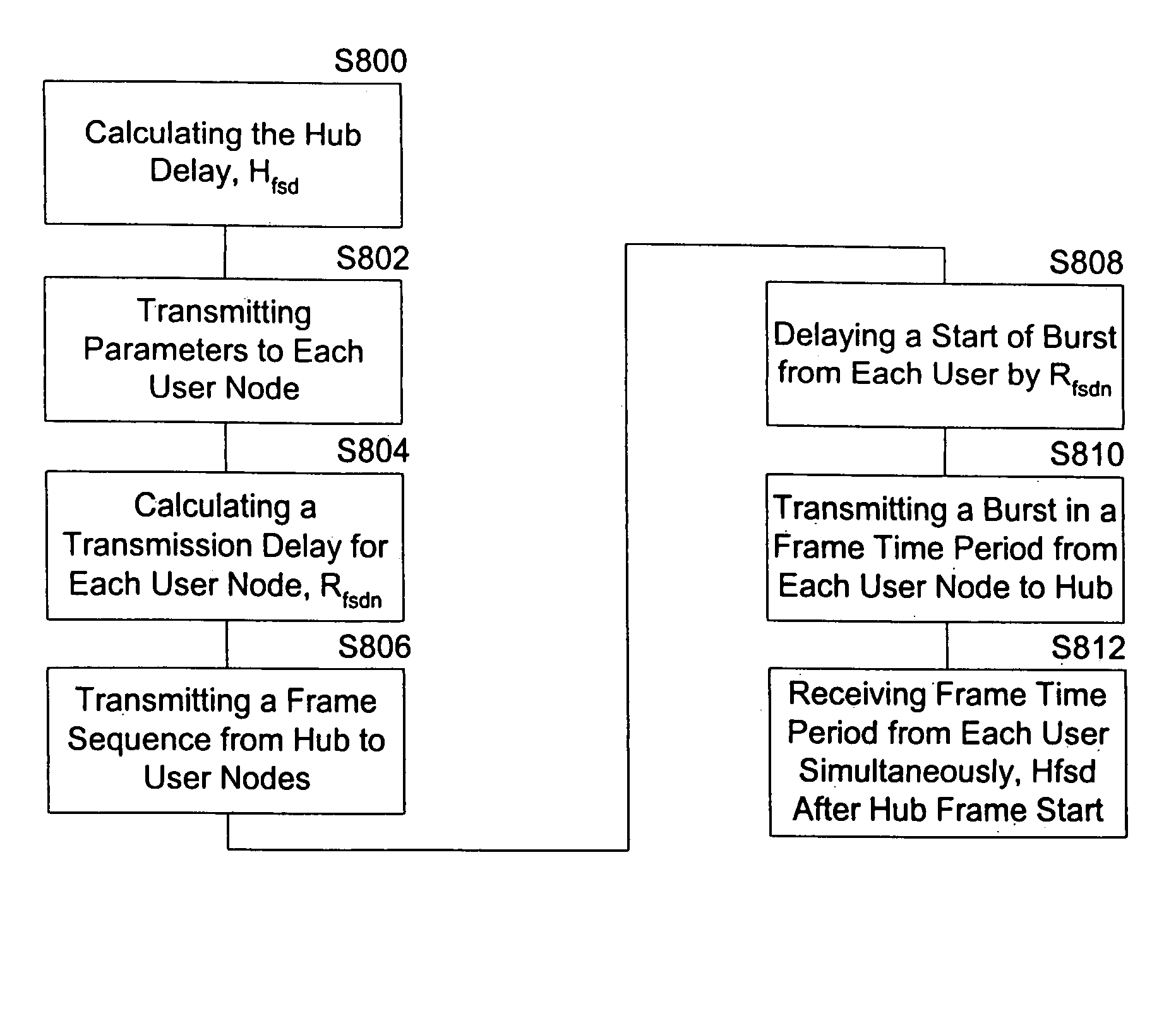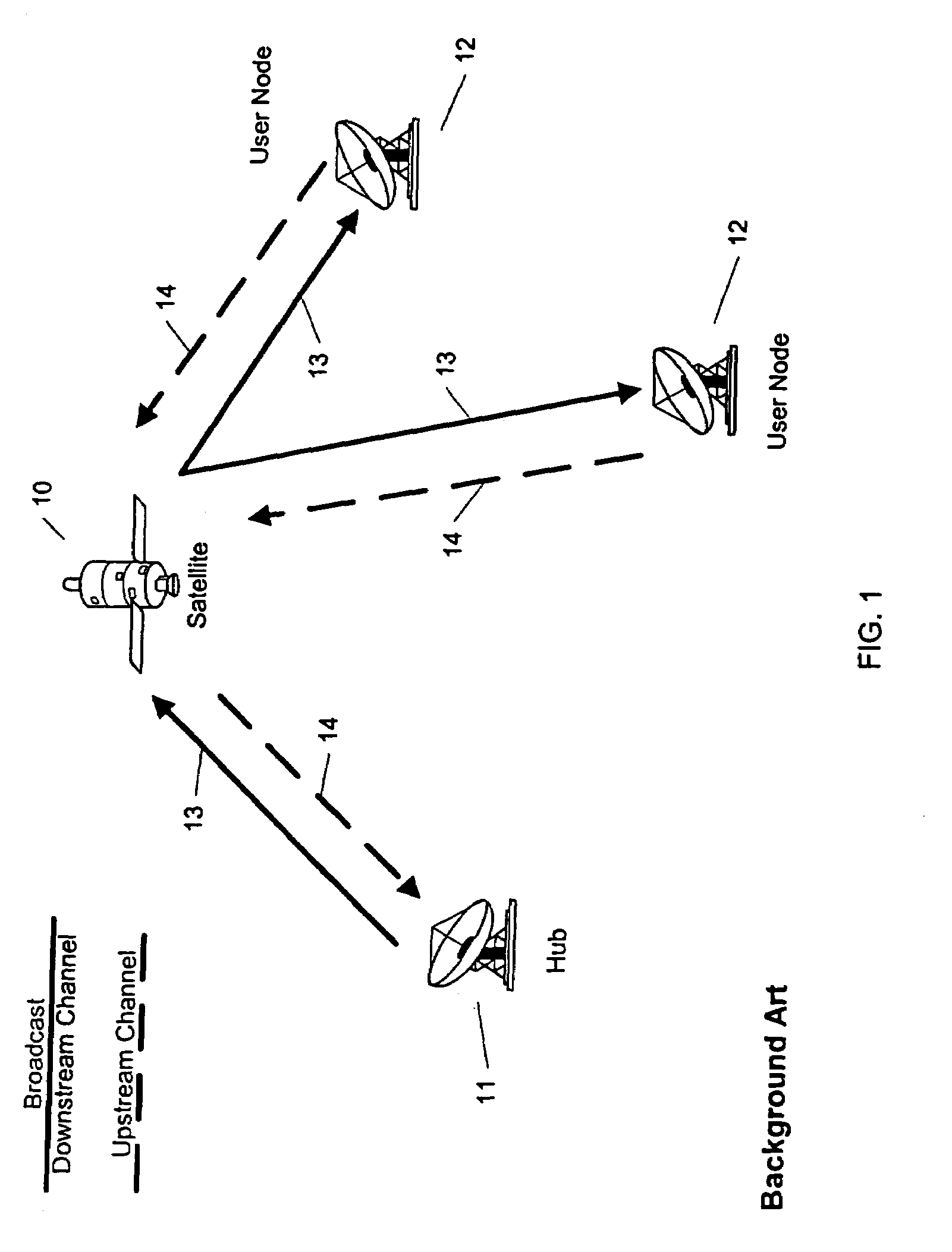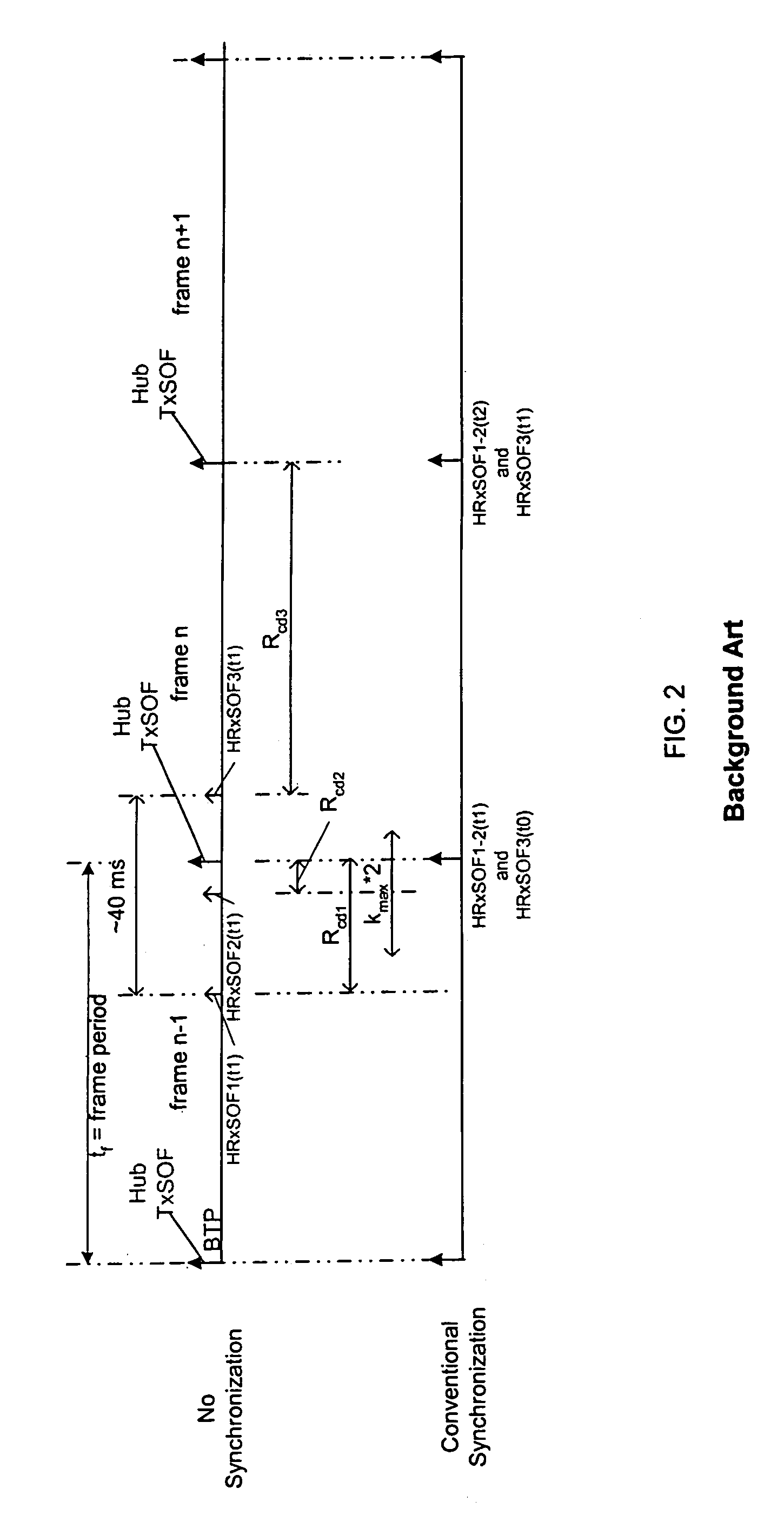Method, apparatus, and system for using a synchronous burst time plan in a communication network
a communication network and synchronous technology, applied in the field of satellite communication networks, can solve the problems of channel subject to further attenuation, extremely long one-way delay, cost of radio-frequency (rf), etc., and achieve the effect of reducing the effective data rate of the link, wasting bandwidth, and reacting quickly
- Summary
- Abstract
- Description
- Claims
- Application Information
AI Technical Summary
Benefits of technology
Problems solved by technology
Method used
Image
Examples
example real
Time Demand Information (for Current Frame Time)
[0113]
NODETotal Demand% Real TimeCIRA0 slots0NoB80 slots0NoC40 slots25%NoD10 slots0YesE0 slots0NoF5 slots0NoG60 slots0YesH40 slots50%No
Example Demand Assignment Decision Process Explanation[0114]Two upstream carriers with 100 slots per frame each results in 200 slots available for the current frame.[0115]235 slots requested so DA will have to make a decision.[0116]Per the Example Prioritization Rules, the Minimum Data Rate is satisfied first for all nodes regardless of their current demand. Since a single slot represents 1 kbit of data, a minimum rate rule of 10 kbps is satisfied by allocating at least one slot per frame.[0117]one slot contains 1000 data bits.
Example Slot Allocation after Satisfying the Minimum Data Rate Constraint:
[0118]
NODESlotsA1 slotB2 slotsC1 slotD5 slotsE1 slotF2 slotsG1 slotH5 slots
A total of 18 slots have been allocated in this example and 182 slots remain free.[0119]Per the prioritization rules, CIR is satisfi...
PUM
 Login to View More
Login to View More Abstract
Description
Claims
Application Information
 Login to View More
Login to View More - R&D
- Intellectual Property
- Life Sciences
- Materials
- Tech Scout
- Unparalleled Data Quality
- Higher Quality Content
- 60% Fewer Hallucinations
Browse by: Latest US Patents, China's latest patents, Technical Efficacy Thesaurus, Application Domain, Technology Topic, Popular Technical Reports.
© 2025 PatSnap. All rights reserved.Legal|Privacy policy|Modern Slavery Act Transparency Statement|Sitemap|About US| Contact US: help@patsnap.com



